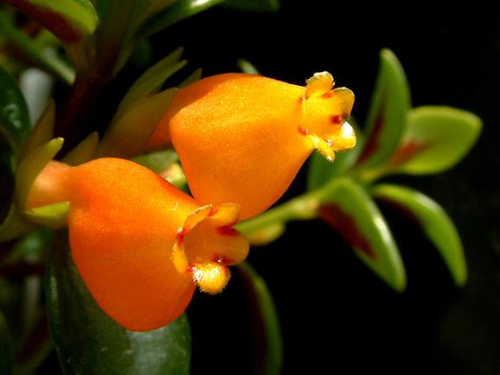What should be paid attention to in the maintenance of Xi Yinhua?
Xi Yinhua is famous for its red paulownia grass. Flowers are solitary in the axils of leaves, scarlet, and bloom in summer. Common varieties are emerald queen, leaves are dark green, midvein silver-white; copper-green shade flowers, leaves are copper-green, leaf edges are light red; chocolate flowers, main veins silver-white and silver-light shade flowers, flowers and leaves like shade flowers and so on.
The main results are as follows: (1) the root system of shade-loving flower is shallow, which is mostly distributed on the surface of loose medium, so it is appropriate to choose shallow pot when potted. The basin soil can be mixed with loose and fertile rotten leaf soil or peat soil plus 1 beat 3 perlite or 1 pound 4 river sand, plus a small amount of aggregate as base fertilizer.
(2) change the basin every spring. Combined with changing the basin for proper pruning, in order to promote branching and more flowering. In the peak growing season (from April to September), thin cake fertilizer and water can be applied once every 10 to 15 days, and liquid fertilizer dominated by phosphate fertilizer can be applied at the end of May to make the flowers bright. When fertilizing, you should be careful not to splash the fertilizer on the leaves, otherwise it will easily lead to leaf rot. Except for the need to control watering in winter, it is necessary to keep the basin soil moist in other seasons, but avoid stagnant water in the basin soil. Soil drainage is poor, too much watering, easy to make short stems near the surface, due to long-term impregnation in the water and cause rot, or root rot. If there are stagnant water droplets on the leaf surface, it is easy to produce sunburn disease after direct exposure to strong light.
(3) controlling temperature and light. Shade-loving flowers like high air humidity, which is conducive to growth and flowering, so it is advisable to spray the leaves frequently in summer to increase air humidity. You can also use a large shallow basin filled with small pebbles, inject clear water, and put the flowerpot on the pebbles to keep the plant in a locally humid environment.
Like warm, humid and semi-overcast environment, afraid of direct light. It can be cultivated indoors with bright scattered light at ordinary times, and in a sunny place in winter. The room temperature is kept above 16 degrees Celsius during the winter.

- Prev

Under what conditions will the lobular goldfish flower be colorful?
Lobular goldfish flower is a perennial herb or subshrub evergreen plant. The leaf blade is tiny and button-like. The stems and branches are slender and drooping. Flowers are solitary in leaf axils. Corolla scarlet, throat yellow. (1) Sex likes a warm, humid and bright environment. Bright scattered light can be placed indoors in spring, summer and autumn.
- Next

How to cultivate potted tulips
Tulip belongs to bulbous flowers planted in autumn, and it is suitable for potted plants from late September to early and middle October. Dwarf varieties and deep pot should be selected in pot culture to facilitate root development. The basin soil can be mixed with 7 parts of rotten leaf soil, 2 parts of sandy soil and 1 part of rotten stable fertilizer soil. A flowerpot with a diameter of 20 cm □ can plant 3 bulbs each.
Related
- Fuxing push coffee new agricultural production and marketing class: lack of small-scale processing plants
- Jujube rice field leisure farm deep ploughing Yilan for five years to create a space for organic food and play
- Nongyu Farm-A trial of organic papaya for brave women with advanced technology
- Four points for attention in the prevention and control of diseases and insect pests of edible fungi
- How to add nutrient solution to Edible Fungi
- Is there any good way to control edible fungus mites?
- Open Inoculation Technology of Edible Fungi
- Is there any clever way to use fertilizer for edible fungus in winter?
- What agents are used to kill the pathogens of edible fungi in the mushroom shed?
- Rapid drying of Edible Fungi

